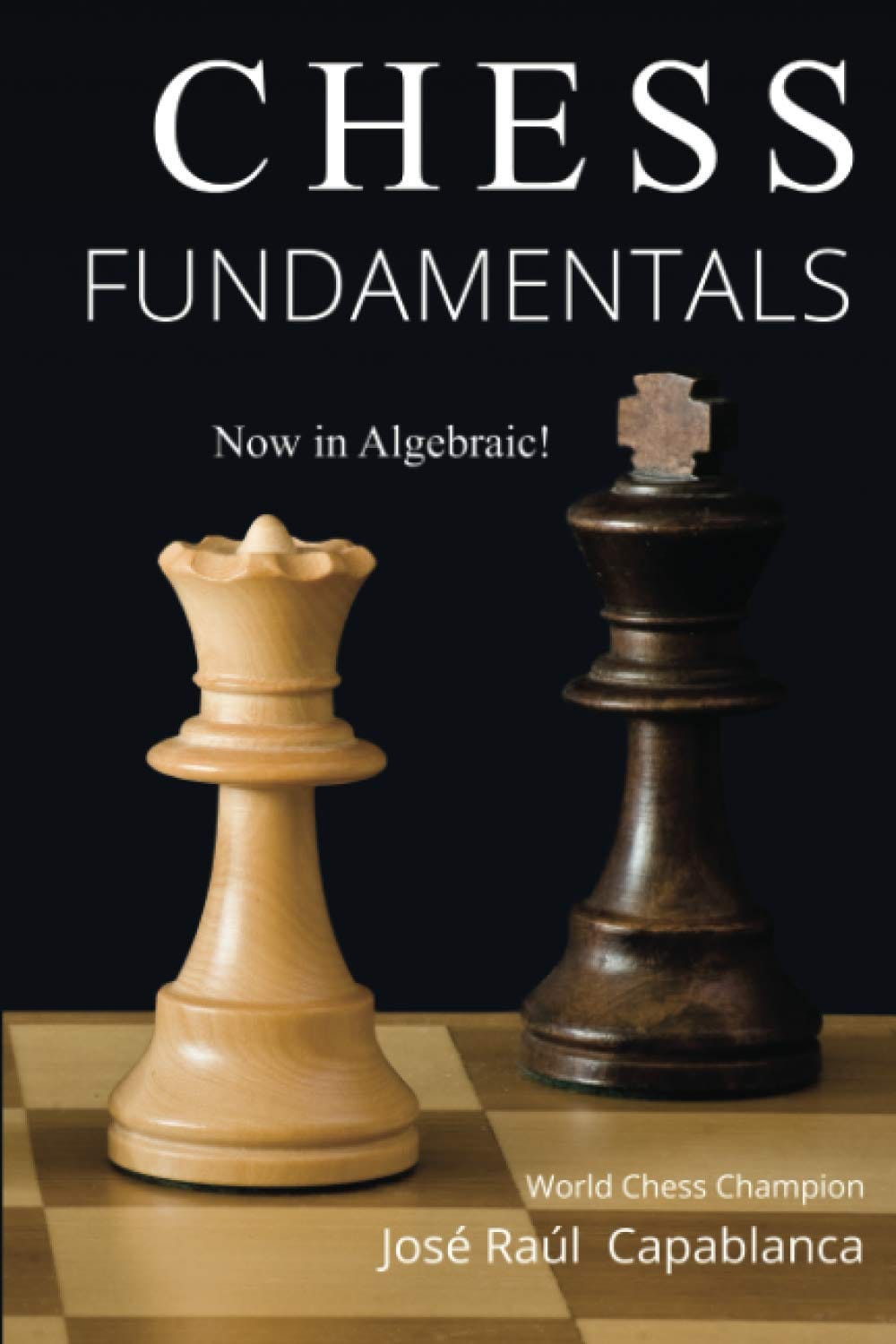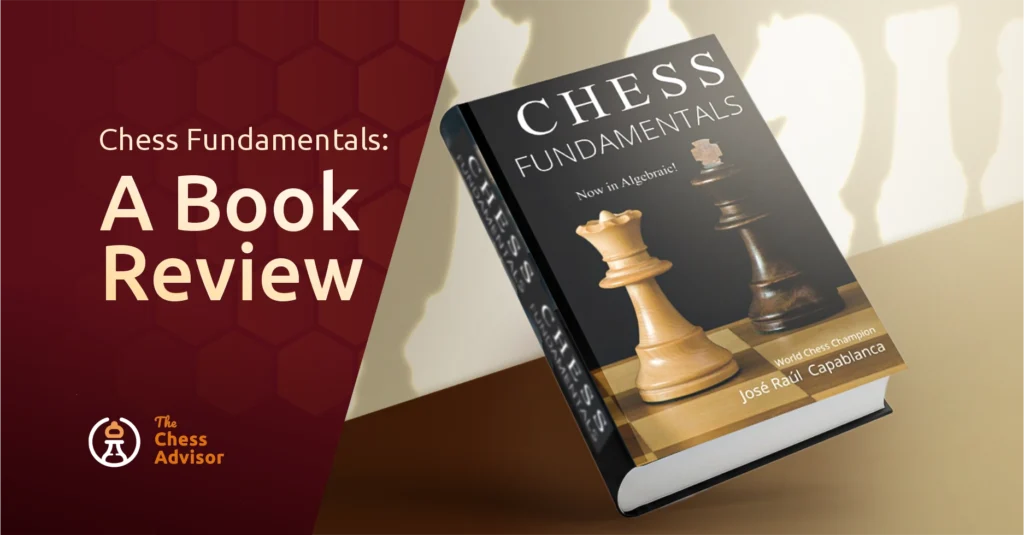Capablanca was one of the best chess players in the world, and it is rare for a top player to write a book. Chess Fundamentals is a must-read for every chess enthusiast because of its instructive value, such as its in-depth analysis of fundamental principles and strategic concepts.

In this article, we will discuss the pros and cons of the book and why it is such a revered classic.
About the Writer and the Book

Jose Capablanca was the third world champion from 1921 to 1927 and is unarguably one of the best players of all time. From 1916 to 1924, Capablanca went on an undefeated streak of 40 wins and 23 draws, an unprecedented milestone before him.
Capablanca was a prodigy who improved faster at chess than any player before him. He learned to play the game when he was just 4 years old.
By the time he was 13, he had defeated the Cuban champion John Corzo in a match before moving to New York to attend university.
He soon dropped out of school, focused on his chess career, and went on a series of exhibitions across the US, making a name for himself. And in 1909, he played a match with the US champion, Frank Marshall.
He had an impressive and dominant run before and after winning the world champion title, undefeated.
Chess Fundamentals is ‘one of the best chess books ever written’—even according to Mikhail Botvinnik.
Book Content Summary
The book comprises six chapters and has 67 examples explaining the different topics. A selection of 14 games of the champion was then annotated.
Chess Fundamentals offers timeless lessons on the core principles of chess. Capablanca emphasises the importance of
- Endgames before opening
- Piece activity and coordination
- Simplified positions for clear learning
- The practical application of theory through fully annotated games provides the reader with Capablanca’s thoughts on these games.
One unique aspect of the book is its decreased emphasis on memorisation and clear focus on helping readers do things correctly at the board.
The book teaches how to convert advantages, execute simple and effective tactics, and approach positions logically. It is written in a clear, easy-to-read voice.
The chapters, as named in the book, are highlighted below.
- First Principles: Endings, Middlegame and Openings.
- Further Principles in Endgame Play.
- Planning a Win in Middlegame Play.
- General Theory.
- Endgame Strategy.
- Further Openings and Middlegames.
The most remarkable feature of Chess Fundamental is the universal tone. Capablanca caters to all demographics of players and speaks to all who are serious about improvement.
His explanations are calm and deliberate, giving the reader space to think rather than overwhelming them with unnecessary commentary and fluff.
This gives the book a feel of being coached by a champion who respects the reader’s pace. His writing has a sense of mentorship, which adds depth to the reading experience.
In addition, the book invites the reader to think beyond the board. Capablanca emphasises the importance of logic, balance, and harmony in play, a concept superior to tactics that improves positional understanding.
This Philosophical approach separates the book from purely technical manuals, teaching how to play better and think better.
Pros
Logical Structure
Capablanca starts the book with an elementary checkmate, builds up to complex concepts like endgame, and creates a game strategy before posting annotated games. This step-by-step approach makes it easy to digest and follow.
Annotated Games
In the book’s last section, Capablanca showcases beautiful chess games and provides detailed explanations that enable players to grasp the strategic approach behind his moves.
Timeless Insight
Many of Capablanca’s teachings and principles remain relevant and insightful for modern chess, despite the game’s evolution over the last century.
Emphasis on mastering the fundamentals before the flashier parts of the game is a message players today learn.
Cons
Descriptive Notations
Some other editions used descriptive notations, which are outdated and difficult to read. Readers should purchase editions that use algebraic notation.
Not for Total Beginners
Contrary to the name “Chess Fundamentals,” the books assume the reader knows how to move the pieces and can read chess annotations. They also assume the reader is working with a coach.
Complete beginners might struggle without a complimentary coach and support, and are better off with a book like Levy Rozman’s How to Win at Chess.
Who is This Book For?
While Capablanca did not explicitly define the audience, this book is ideal for individuals interested in learning fundamental chess theories and strategies.
It is geared to players who are not absolute beginners but want to improve beyond their basic understanding of piece movement. The book is for any player between 1,000 ELO and 2000 ELO.
Final Thoughts
Chess Fundamentals is a cornerstone in chess literature, offering enduring value to players of all levels.
To players with a basic knowledge of the game and chess notations, this book will undoubtedly enhance their understanding of positions, planning middle games, and everlasting playing techniques.
